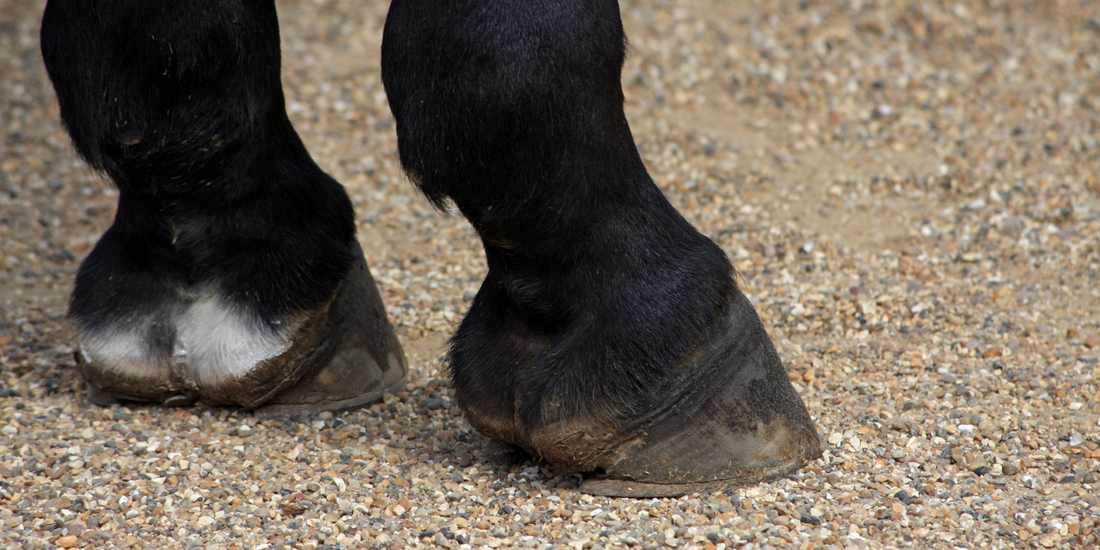Hoof health plays a vital role in the overall well-being and productivity of livestock. Overgrown hooves are more than just an aesthetic issue; they can lead to severe discomfort, lameness, and long-term structural damage.
If left untreated, excessive hoof growth can compromise an animal’s mobility, making it difficult to graze, walk, or even stand comfortably.
Fortunately, with proper hoof care and the right tools, such as Trim-Tec’s high-quality hoof trimming wheels, livestock owners can maintain healthy hooves and prevent complications.
This guide explores the primary causes of hoof overgrowth, effective treatment methods, and why investing in premium trimming equipment is essential for maintaining hoof health.
What Causes Hoof Overgrowth?
Lack of Natural Wear
In the wild, animals naturally wear down their hooves by moving across rough and abrasive terrain. However, domesticated livestock often live on soft pastures or stable bedding, which does not provide enough friction to keep hooves naturally trimmed.
This lack of natural wear allows hooves to grow unchecked, leading to an overgrowth that can affect an animal’s gait and joint health.
Improper Diet
A balanced diet is essential for proper hoof development. Diets high in carbohydrates or lacking in key nutrients such as biotin, zinc, and amino acids can contribute to poor hoof structure and excessive growth.
Hooves are made of keratin, much like human nails, and require the right nutrition to maintain strength and prevent brittle or deformed growth patterns.
Neglected Hoof Maintenance
Regular trimming is an integral part of livestock care. Without consistent maintenance, hooves can become excessively long, leading to uneven weight distribution and increased strain on tendons and ligaments.
If neglected for too long, overgrown hooves can split or curl, making movement painful and increasing the risk of infections.
Genetics and Age
Some animals are genetically predisposed to faster hoof growth, requiring more frequent trimming than others. Additionally, as livestock age, their hooves may become more brittle or prone to deformities, making regular hoof care even more critical.
How to Treat Overgrown Hooves?
Assess the Hoof Condition
Before trimming begins, it is crucial to assess the severity of the overgrowth. Look for signs of excessive length, cracks, or curling. Additionally, check for infections, abscesses, or signs of lameness. Identifying these issues beforehand will help ensure a safer and more effective trimming process.
Use High-Quality Trimming Equipment
One of the most effective ways to treat overgrown hooves is by using professional-grade tools. Trim-Tec’s hoof trimming wheels are designed for precision and efficiency, allowing for a smoother and safer trimming experience.
Unlike traditional trimming tools, these wheels provide superior control, ensuring an even and accurate cut that prevents further hoof damage.
Follow Proper Trimming Techniques
Trimming hooves requires patience and skill. Removing too much material at once can cause soreness and imbalance, leading to discomfort and potential injury. It is best to trim in small increments, gradually shaping the hoof to restore its natural form.
A sharp, high-quality trimming wheel helps achieve an even trim without excessive effort or pressure on the animal.
Monitor and Maintain Regular Trimming Schedules
Prevention is key when it comes to hoof overgrowth. Establishing a routine trimming schedule ensures that hooves remain at an optimal length, preventing future complications.
The frequency of trimming depends on the animal’s breed, diet, activity level, and hoof growth rate. Consulting with a hoof care professional can help determine the best schedule for each animal.
Address Underlying Causes
Simply trimming overgrown hooves is not enough, livestock owners must also address the root causes to prevent recurrence. This includes providing proper nutrition, ensuring animals have access to rough surfaces for natural wear, and keeping their living environment clean to reduce the risk of hoof infections.
Does High-Quality Hoof Trimming Wheels Matter?
Precision Cutting
The quality of trimming equipment directly impacts the effectiveness of hoof care. A well-designed trimming wheel allows for accurate and controlled hoof shaping, reducing the risk of over-trimming or uneven cuts.
Trim-Tec’s hoof trimming wheels are engineered to provide smooth and consistent results, ensuring the best possible hoof health outcomes.
Efficiency & Durability
Using a high-performance trimming wheel significantly reduces the time and effort required for hoof maintenance. Inferior tools may wear out quickly or struggle to cut through tough hooves, making the process more challenging.
Trim-Tec’s trimming wheels are built to withstand heavy use, maintaining sharpness and efficiency over time.
Smooth Finish
Poor-quality tools can leave jagged edges or uneven surfaces on hooves, increasing the likelihood of cracks or infections. A high-quality trimming wheel provides a clean, smooth finish that promotes better hoof integrity and reduces post-trimming soreness for the animal.
Long-Term Hoof Health Benefits
Investing in superior hoof trimming equipment has long-term benefits. Regular use of a professional-grade trimming wheel ensures balanced and healthy hooves, reducing the risk of lameness, joint strain, and other hoof-related complications.
By prioritizing quality, livestock owners can improve overall animal welfare and productivity.
Conclusion
Overgrown hooves are a common issue in livestock management, but they can be effectively managed with proper care and high-quality tools.
Understanding the causes of hoof overgrowth, implementing a structured trimming routine, and investing in Trim-Tec’s professional-grade hoof trimming wheels can make all the difference in maintaining optimal hoof health.
By taking a proactive approach to hoof care, livestock owners can ensure their animals remain comfortable, mobile, and productive.
Whether preventing future hoof issues or addressing existing overgrowth, the right trimming equipment and techniques play a crucial role in keeping hooves strong and healthy for years to come.

